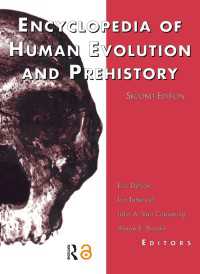Full Description
Metapragmatics of Humor: Current research trends contributes to a new area in the pragmatics of humor: its conception as a metapragmatic ability. The book collects thirteen chapters organized into three parts: Revisions and applications of General Theory of Verbal Humor (GTVH) in a metapragmatic context; Metapragmatic awareness of humor across textual modes; and Metapragmatic practices within the acquisition of humor. Thus, this book provides an up-to-date panorama of this field, where metapragmatic abilities are described in adults as well as in children, on humorous and non-humorous genres — jokes, cartoons, humorous monologues, parodies, conversation, Twitter —, and using several approaches, such as GTVH, multimodality, conversational analysis, eye-tracking methodology, etc.
Contents
1. Exploring metapragmatics of humor (by Ruiz-Gurillo, Leonor); 2. Part 1. Revisions and applications of General Theory of Verbal Humor (GTVH) in a metapragmatic context; 3. The variables of the evaluative functional relationship: The case of humorous discourse (by Alba-Juez, Laura); 4. Humor and advertising in Twitter: An approach from the General Theory of Verbal Humor and Metapragmatics (by Alaman, Ana Pano); 5. Beyond verbal incongruity: A genre-specific model for the interpretation of humor in political cartoons (by Aguero Guerra, Marta); 6. Metapragmatics of humor: Variability, negotiability and adaptability in humorous monologues (by Ruiz-Gurillo, Leonor); 7. Part 2. Metapragmatic awareness of humor across textual modes; 8. 2.1. Jokes; 9. Lawyers, great lawyers, and liars: The metapragmatics of lying in lawyer jokes (by Campos Pardillos, Miguel Angel); 10. A look at metalinguistic jokes based on intentional morphological reanalysis (by Balteiro, Isabel); 11. 2.2. TV genres; 12. How do French humorists adapt across situations?: A corpus study of their prosodic and (dis)fluency profiles (by Grosman, Iulia); 13. Truthiness and consequences: A cognitive pragmatic analysis of Stephen Colbert's satirical strategies and effects (by Stewart, Craig O.); 14. 2.3. Conversation; 15. Variability, adaptability and negotiability in conversational humor: A matter of gender (by Alvarado-Ortega, M. Belen); 16. Teasing in casual conversations: An opportunistic discursive strategy (by Priego-Valverde, Beatrice); 17. Smiling, gaze, and humor in conversation: A pilot study (by Gironzetti, Elisa); 18. Part 3. Metapragmatic practices within the acquisition of humor; 19. Understanding of humorous intentions: A developmental approach (by Hoicka, Elena); 20. Children using phraseology for humorous purposes: The case of 9-to-10-year-olds (by Timofeeva-Timofeev, Larissa)
-

- 洋書電子書籍
- Encyclopedia of Hum…







